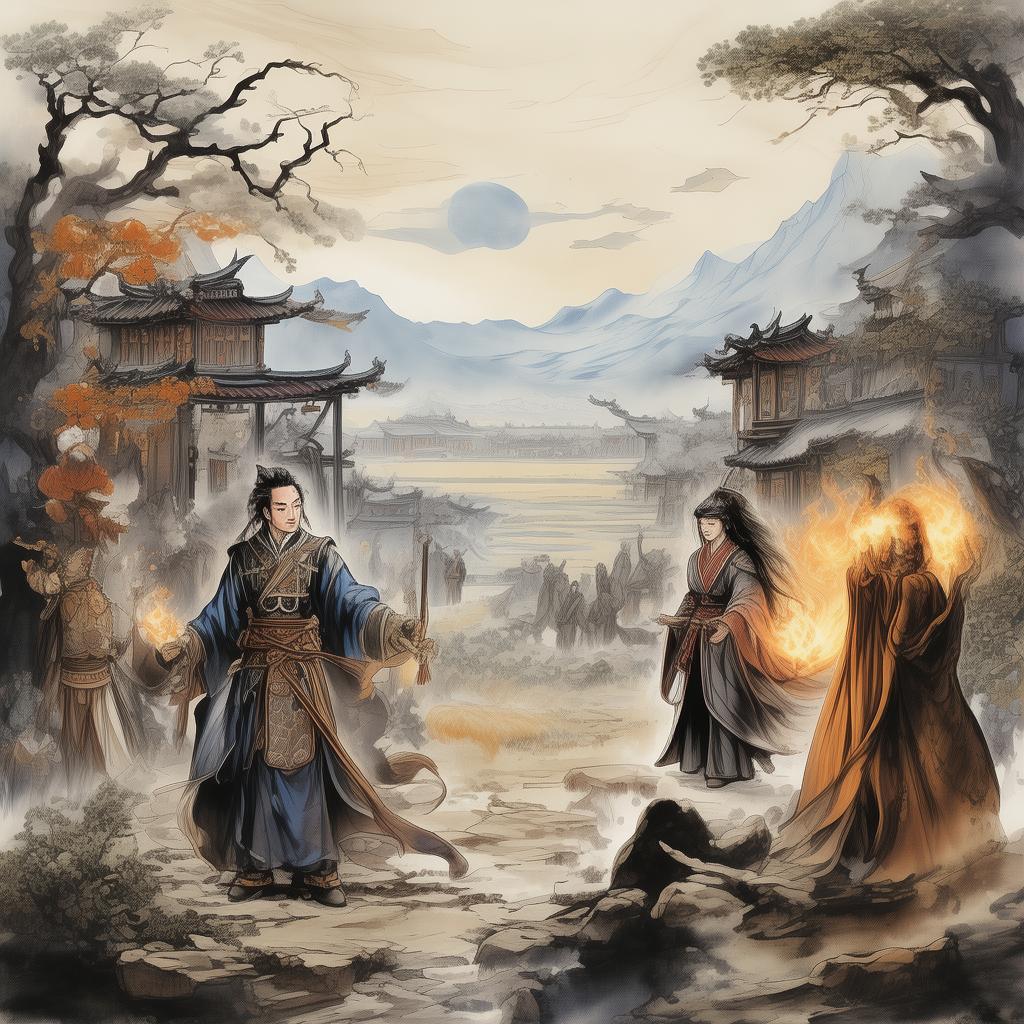The Lute's Lament: A Tale of Melody and Mystery
In the quaint village of Melody’s Rest, nestled between the whispering woods and the rolling hills, there lived a young lute player named Aria. Her fingers danced across the strings with an ease that belied the years of solitude she had spent practicing in the silence of her grandmother's attic. Aria's lute played melodies so beautiful they seemed to have a life of their own, a whispering siren call that could draw the listener into the depths of their dreams.
The village, though small, had its share of tales, one of which was The Lute's Tragedy, a story of a lute that had been crafted by a master luthier during the height of the Renaissance. It was said that the lute held within it a forbidden melody, one that could bring joy and sorrow in equal measure and had been lost to time.
One rainy evening, as Aria played her lute under the moonlit sky, a sudden gust of wind swept through the window, and the lute began to resonate with an eerie, melodic chime. The sound was unlike any Aria had ever heard, a haunting melody that seemed to pierce the very soul. Startled, she pressed her fingers to the strings, but the music was lost, leaving behind only a silent instrument.
Days turned to weeks, and the melody returned with a ferocity that left Aria drained and the village in a state of unease. She realized that the melody was not a mere ghostly wail, but a call from the lute itself, seeking the one who could decipher its ancient code.
Word of the lute's strange behavior reached the ears of an old and enigmatic luthier named Alaric, who was known for his expertise in ancient instruments. Alaric had a reputation for being a keeper of secrets, one who had once been a guardian of the lute's tragic past. With a sense of urgency, he traveled to Melody’s Rest, bringing with him a sense of both awe and trepidation.
Upon arrival, Alaric was met by Aria, whose eyes were wide with the fear of the unknown. He examined the lute, his fingers tracing the intricate carvings and symbols that adorned its body. “This is no ordinary lute,” he said, his voice low and grave. “It is imbued with the spirit of the melody, and to play it is to face the music of the ages.”
Aria’s curiosity and determination were pitted against the ominous warning from Alaric. The melody could either restore her lute to its former glory or unleash a tide of despair upon the village. Alaric imparted a warning, “Only one with pure intent and a heart attuned to the music of the cosmos can play this melody. Any other, and the world will be forever altered.”
Intrigued yet wary, Aria decided to accept the challenge. She knew that to play the melody would mean delving into the mysteries of her own past, and perhaps even the past of her village. She embarked on a journey, seeking guidance from the village elder, the wise woman known as Elara, whose eyes seemed to hold the secrets of ages.
Elara’s ancient tales spoke of a time when the village was under the protection of the lute’s melody, and its magic was woven into the very fabric of the land. However, as time passed, the melody was forgotten, and the magic faded, leaving the village vulnerable to the shadows that lurked in the woods.
With Elara’s wisdom and Alaric’s mentorship, Aria began to understand the lute’s true nature. It was not a mere instrument, but a vessel of ancient power, one that required a player who was both a guardian and a bridge between worlds.
As the night of the final challenge approached, Aria sat alone with her lute, her heart pounding with the weight of the responsibility she carried. She played, not with her fingers, but with her soul, the melody flowing from her as if it were a part of her own essence. The air around her shimmered with the ethereal light of the melody, and the village awoke to a symphony of beauty that had never been heard before.

But the journey was not without its perils. As Aria played, the shadows in the woods began to stir, led by a figure cloaked in darkness who sought to claim the melody for his own malevolent purposes. A battle ensued, a clash of melodies and intentions, with the village's fate hanging in the balance.
In the end, Aria's purity of intent and her deep connection to the music triumphed. The melody became a beacon of hope and protection for the village, and the lute was no longer a source of tragedy, but a symbol of the unity and resilience of its people.
The Lute's Lament, with its melody of joy and sorrow, became a legend passed down through generations, a tale that reminded all who heard it of the power of music to heal and unite, and of the strength found within the human spirit.
✨ Original Statement ✨
All articles published on this website (including but not limited to text, images, videos, and other content) are original or authorized for reposting and are protected by relevant laws. Without the explicit written permission of this website, no individual or organization may copy, modify, repost, or use the content for commercial purposes.
If you need to quote or cooperate, please contact this site for authorization. We reserve the right to pursue legal responsibility for any unauthorized use.
Hereby declared.









